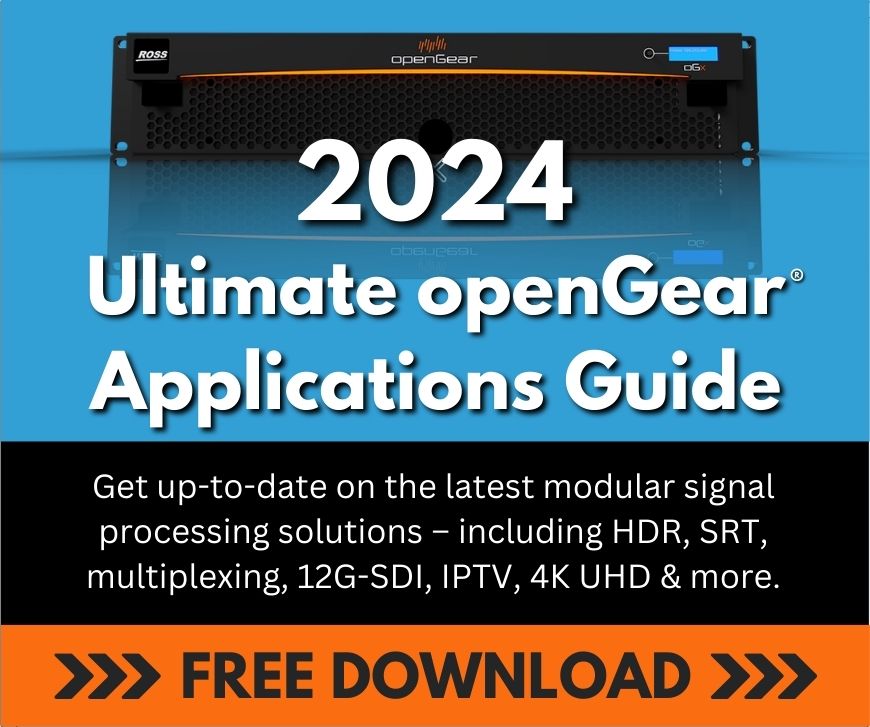Bill Rounopoulos and Cindy Zuelsdorf talked with Matt Robbins and Simon Tillyer of KitPlus TV about the cutting-edge applications that are possible with openGear frames and the DashBoard control system. Want to know more? Get the free Ultimate openGear Applications Guide.
Matt:
Hello, and welcome to the show supported by MediaProxy. In the coming week or so, we are focusing on openGear and the solutions offered by a number of openGear partners. To kick off the series, we’re delighted to welcome Bill Rounopoulos from Ross Video and Cindy Zuelsdorf. Welcome to the show, guys.
Bill:
Thanks, Matt.
Cindy:
Good to see you.
Simon:
Good to see you both. So let’s start at the beginning. Bill, can you, for anybody watching this who may not have come across openGear, give a quick overview of what it is and bring us up to speed on the state of openGear today?
Bill:
Thanks, Simon. Yes. So openGear is a modular platform developed by Ross over 15 years ago that we opened up to external partners, and it has done really well over that time. We have over 40,000 frames shipped, which is just incredible, 130 plus partners, four industry awards, including an Emmy. So overall, it has been a resounding success. It continues to involve. The openGear frame is now in its 4th generation and supports today’s most demanding UHD and IP productions while still being backward compatible. And more openGear cards with new capabilities, protocols, and functionality addressing the needs of users are being added constantly. openGear continues to offer users the freedom to choose the very best products and technology from a wide set of partners, all managed by the DashBoard control system.
Matt:
So what’s new from Ross then in the openGear world?
Bill:
Well, we continue to broaden our 12G-SDI openGear portfolio to provide customers a smooth migration path to UHD. The 12G functionality is offered via a software license on our openGear cards, so you can buy the latest hardware now and purchase 12G later when your facility is ready for UHD. In addition to our ever-popular 8900 SERIES of 12G-SDI DA’s, we offer Gator Toolbox for format and standards conversion, HDR mapping, color correction, audio processing, audio embedding and de-embedding. And it comes with fiber options, too, if required. That’s a lot of functionality in one cart. If you’re looking for a frame synchronizer with superior density and flexibility, GATOR-SYNC offers four channels for synchronizing, timing and processing of audio and video from HD to 12G-SDI. We also have MC1 UHD, which is our high-quality, affordable master control and branding solution that supports HD and UHD workflows, scaling from stand-alone branding to multi-channel master control installations. And rounding out our 12G openGear portfolio is the AMX8952, our 12G-SDI embedder/de-embedder, for cost-effectively adding discreet audio signals into your HD, 3G or 12G-SDI infrastructures.
Simon:
So Cindy, maybe you can tell us what kinds of facilities are using openGear. I mean, who are the customers?
Cindy:
I’m glad you asked about that, Simon, thank you. So TV stations, enterprise video facilities, corporate video, House of Worship, sports, and live, of course. Can I tell you about the Kansas City Royals installation a little bit?
Simon:
Yeah. Go for it. Yeah.
Cindy:
Yeah. So Kansas City Royals have a stadium, major league baseball, of course. And so, the DashBoard system, which is the openGear control system, is used heavily there. And Rocket Surgery, the team from Ross Video, put all of this together to where – just, for example, to take the middle part of the facility – the production switcher sending GPI over to DashBoard, the openGear control system, then maybe turns on lights at the Boulevard tower (that everybody knows about at the Kansas City Royals facility) that pushes ads to some of the graphics and during home run moments turns on some fountains and does things like that. So, openGear’s system can be used in a lot of different ways, from signal processing all the way to doing different types of controls.
Matt:
And so, I guess the next thing is, what does the future hold? Where’s openGear headed from Ross’s point of view?
Bill:
Well, thanks for that question. The future looks bright, building on this continuous success: more frames, more partners, more people downloading and using DashBoard every year. There were over 20,000 DashBoard downloads in the last six months alone. Users will continue to benefit from the innovation on leash by over 130 partners developing solutions. And the pace of this innovation will only accelerate as more partners join the ecosystem every year. We added 14 new partners alone just this year. This means users will have more choice and more solutions, the freedom to choose the very best to meet their needs, solve their challenges, and fit their budgets. All managed from one free control system.
Simon:
So if we can just rewind a bit, Bill. You mentioned the 4th gen when we were talking earlier on, and I think the objective when you developed this new generation was for it to be backward and forward compatible after 15 years. I mean, to me, that sounds like an impossible dream. Is that something that you’ve achieved?
Bill:
Yes. I believe we have; it’s always been part of the strategy to ensure that the cards work on all the previous frames. And whenever we add… Basically, we bumped up the power of the frame, we bumped up the cooling, we made all these other enhancements, and it’ll be able to deal with higher power cards. Now obviously, these IP and UHD that use heavy-duty FPGAs are going to be too powerful. They can still be used in the previous frames, but if you use the 4th generation oGx Frame, you can get a higher density in there. So, that’s kind of how we do it. So in a sense, it is forward compatible because we can address the latest technologies, and it’s still backward compatible.
Simon:
So with the large number of openGear partners you have, how do all their various solutions work together?
Cindy:
Great question and there are hundreds of openGear leader partners. The frame works really well because you could have, for example, camera feeds coming in and maybe a MultiDyne card taking that fiber into the frame. You might have a Sencore Decoder card bringing UHD into a system, and then, as Bill mentioned earlier, you could have the Ross Video Gator key logo over something, just for example. And maybe on the output, you would have the Vitec encoder take the signal to H.264 or have the D2D card take it SRT. And if you’re doing internet broadcast, and there are Dante signals, the AJA is going to handle that. So you could have all those in one frame. And that’s really the history of openGear is that Ross video was looking for a frame where different manufacturers can work together. And that helps the customer. They have more choice.
Matt:
Fantastic. So we should really be in Vegas right now at NAB, and sadly, we’re not, but we have got our IBC around the corner. How can viewers, how can the industry engage with Ross around these two big shows? How can we get in touch with you, Cindy?
Cindy:
You can get in touch with us at opengear.tv. You’ll find everything about openGear there. And Bill, what’s the best URL for Ross Video?
Bill:
For Ross Video, you can go to rossvideo.com/opengear, and there you’ll find all the information on all our solutions and also a place where you can contact us.
Matt:
Thank you very much. We hope we’ll catch up at a show soon. But yes, definitely, thank you very much to both Bill and Cindy for coming in. Don’t forget, this is the first of a line of openGear interviews. So watch out for the rest, coming soon from a number of key partners. Thanks to Mediaproxy for their support of KitPlus TV, and thanks to you for watching. See you next time.
Get the free Ultimate openGear Applications Guide for more information.

